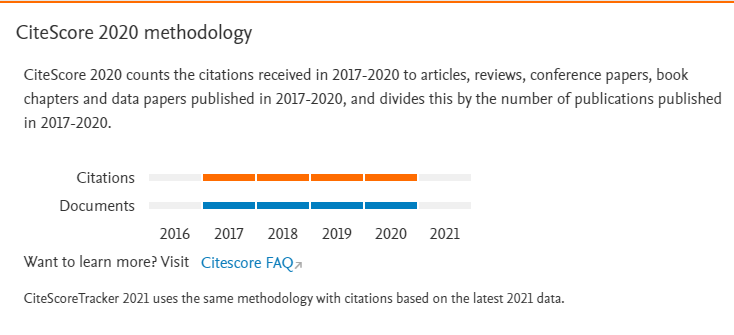CiteScore 2020 values are now live!
With ten years of metrics now available, researchers can use CiteScore to help determine where to publish and showcase their research and identify serial titles to read. In the last 12 months, 4,369 titles have improved their CiteScore Percentile by 50% or more; your favorite journal could be among them. Check it now!
The CiteScore methodology reflects the citation impact of a journal’s research-based contributions with greater stability and consistency in applied time ranges. It also remains comprehensive, current, clear and free.
- Comprehensive: CiteScore is available for all serial titles, not just journals. More than 26,000 journals are included —13,000 more than receive a Journal Impact Factor. available for twice as many journals as JIF
- Current: The CiteScore Tracker is update monthly. New titles in Scopus usually have CiteScore metrics the year after they are included in Scopus. It is a popular feature, especially amongst editors and publishers[B(1] [V(2]
- Clear (transparent, simple and easy to understand): The ability to access underlying documents and citations in CiteScore provides transparency, compared to the JIF’s opacity
- Free: Unfettered access to CiteScore (for both Scopus subscribers and non-subscribers) removes barriers to adoption
More publishers are adopting CiteScore
CiteScore is also perceived by the publishing community to be publisher agnostic. Over a third of journals with a CiteScore now display the CiteScore annual value on their home page. Over the last year large publishers such as Taylor & Francis (over 2000 titles), Frontiers (50 journals), Oxford University Press (339 journals), Emerald Publishing (484 journals), Copernicus Publications (37 journals), KeAi publishing, MDPI (282 journals), SAGE [Publishers that have adopted CiteScore as a journal metric and displaying it on their journal pages] (1000+ journals), Walter de Gruyter (900+ journals), Hindawi (180 journals) and many smaller publishers have published CiteScore on their journal and metric homepages, to highlight the citation impact of their journals as part of an array of metrics.
An ever-growing number of titles have now a CiteScore
25,990 active titles, spanning 330 disciplines, are included in CiteScore 2020! A 3% increase in the number of titles compared to 2019. Breaking that down even further, CiteScore 2020 comprises of:
24,900 journals
212 Trade journals
728 book series
150 conference proceedings series
Complies with the DORA and Leiden Manifesto
Since the last CiteScore release, Elsevier has signed the DORA and the Leiden Manifesto. The revised CiteScore aligns with the principles reflected by the manifesto. For example:
- Principle 10 of the Leiden Manifesto states that indicators must be scrutinized and regularly updated. CiteScore was launched in 2016 and, by 2020, we had revised it based on expert and user feedback.
- Principle 4 says that data collection and analytical processes have to be open, transparent and simple; the latest version is transparent and the methodology openly available.
- Principle 5 says that those evaluated must be allowed to verify data and analysis, and as such the underlying data are freely available for verification purposes without a subscription to Scopus.
Elsevier and Scopus support a responsible use of metrics. For more information check out our webinars:
- Advancing responsible research assessment: implications for librarians
- Research metrics in action part 1: Responsible research metrics and evaluation
- Part 2: Understanding what funding bodies expect from grant applications
- Part 3: Understanding how metrics can support real-world decisions





